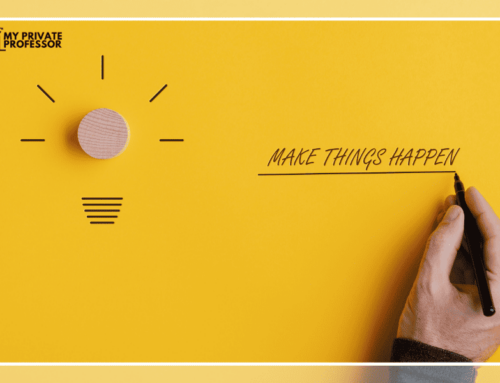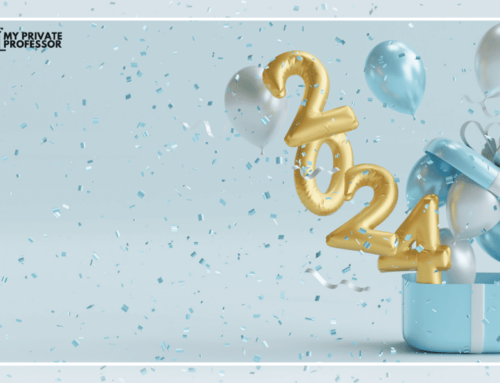If this past year brought us anything, it showed us that the world can drastically change before our eyes–and we need to be ready. Creativity is key here—how we cope and think of ways to thrive in an unstable or abnormal event.
Traditional education models may discourage creativity
Sir Ken Robinson poses the question: Why are we educating children to prepare them for the future, when we have no clue what the world will look like in five years? This isn’t to say that we shouldn’t prepare them, but perhaps we’re preparing them improperly.
Robinson is highlighting the way in which so many educational institutions apply a traditional education model which may consequently stifle creativity.
In reality, creative thinking is what allows students to be “prepared” for the unknown. The reality is, no one can be entirely prepared. But we can give students tools to look at any particular situation with open minds. That is, an open perspective and the ability to come up with several solutions is a critical skill.
Traditional education vs. modern methods
Although the traditional education approach may not be intended to suppress creative expression, it often has this effect. This teaching method usually focuses on memorization, and working in a future-driven path. On the contrary, modern teaching methods center around student understanding, exploration, and thinking.
Some say that traditional teaching is teacher-centered (instruction and recitation), while modern teaching is student centered (exploration and innovation).
While memorizing facts and theorems may benefit students in academic performance, traditional teaching can neglect the value of critical thinking, problem solving, and decision-making skills.
When you look at the bigger picture of education, it seems counterproductive that educators don’t prepare students to gain skill sets and knowledge that equip them to live in a continually-evolving world.
The arts are dying. Is creativity going with them?
Over the last few decades, arts programs within education have dipped drastically.
All across the country, public schools and traditional four-year colleges are facing cuts in the funding for art programs. Unsurprisingly, this is disappointing for the students who have artistic aspirations.
Are educational institutions forgetting about the value of creativity?
Creativity improves student performances and outcomes
In a 2011 article in Creative Research Journal, data showed that although IQ scores have risen since 1990, creative thinking scores have decreased significantly.
In an education class I took, we learned about the importance of unstructured playtime for adolescents. This time allows young students to gain independence, and develop in so many ways—cognitively, physically, and emotionally. In order to enter “the real world” students need more than drilled-in arithmetic lessons and the dates of every historical battle.
They need freedom, creativity, and acceptance!
In a 2019 report, Gallup investigated the extent to which classrooms foster creativity, its value, relevant obstacles, and technology’s role. Their results showed that:
- Creativity in the classroom yields positive outcomes for students, & teachers can magnify these outcomes by using technology to its full potential.
- Technology’s use in the classroom has limits when it comes to creative activities (in other words, teachers are not utilizing its full potential).
- A supportive and collaborative culture combined with training and the freedom to try new things are major factors in helping teachers bring creativity to the classroom.
Creative intelligence is dynamic, and so are we
‘’Creative intelligence is dynamic, it’s diverse and it’s distinct,’’ Sir Ken Robinson states.
As such, he discusses the way in which one’s ability to view the world in several ways breeds creativity. When I heard this, I started thinking about the irony that, as our society becomes more tolerant of seeing each other in diverse ways, educators have become somewhat less open to students thinking in different ways.
Often, we teach children, from a young age, to think in dichotomous ways: right vs. wrong.
Now, as technology continues to surge, we urge students to view their educational journey as a list of checkpoints. Rather than teaching students to think for themselves and value their unique ideas, traditional teaching methods almost rewire students to think inside of the box. Furthermore, with the magnified importance of standardized tests and STEM, educators now encourage students to go through the school, checking off boxes as they go:
- Get good grades
- Get into a good college
- Get a sustainable–and realistic–job
The thing is, even if we’re developing more acceptance, technology still is a huge factor in driving us to be competitive–at least in the career sense.
As technological developments surge, we’ve recognized that technology may be reaching a point where it can take on our responsibilities And, for some, careers. So instead of being excited to express their true aspirations and beliefs, students may be inclined to pursue a field about which they have no interest. In doing so, we become more competitive–with one another and technology.
Do we want to be this competitive?
In reality, most of us actually don’t perceive power, prestige, and wealth to be the most important parts of life.
A Gallup survey on American perceptions of success determined that there is a large discrepancy between how we perceive society to view success and how we actually view success. Most Americans mark their success by a combination of factors–life quality, work, character, health, and more.
It seems that several factors have driven us to feel overly competitive–”forced” may be literal or metaphorical, depending on your financial situation, home life, and personal factors.
Yet, it seems we still hold dear our inner needs and desires to lead fulfilling lives. And, according to the survey, this goes beyond wealth, status, and competition. Rather, many of us hope to have authentic social relationships, a satisfying and/or challenging job, and genuine passions.
We stigmatize mistakes
According to Sir Ken Robinson, stigmatizing mistakes is directly related to stifling creativity. As he states, “… the result is that we are educating people out of their creative capacities.” When we associate mistakes with shame, we’re far more uncomfortable in the face of failure.
So what should we do to turn this around? In order to debunk our perceptions around mistakes, we must begin rethinking the concept of mistakes. This requires shifting our mindsets entirely. If you start thinking about a mistake as natural and human, you can begin to actually make something of your mistakes. Everyone makes mistakes—it’s cliche, but true.
Mistakes lead to creative solutions
Mistakes are actually key ways in which people come to brilliant conclusions!
Take, for example, Alexander Fleming. In 1928, Fleming, a bacteriologist, was going on vacation and left behind a pile of dirty petri dishes. When he returned, upon discovering that most of the dishes were contaminated, he noticed an area in which bacteria hadn’t grown. Fleming isolated the mold and identified it as part of the Penicillium genus, discovering it could serve as a powerful bacteria killer. The result was the discovery of penicillin.
Another example: In 1985, Wilhelm Roentgen, a Physics Professor in Bavaria, was trying to determine whether cathode rays could pass through glass. Incidentally, he realized that the rays could pass through human tissue, and the X-ray was born.
Whether we like it or not, mistakes are a breeding ground for innovations. And if we stifle creativity, we’re by virtue, stifling mistakes. In order to let students reach their potential, we must encourage them to take risks & make mistakes.
Celebrate curiosity and creativity
With this increase in competition, there’s less time to do all those leisure–and likely creative–activities that we wish we had more time for. Think painting, yoga, reading, playing games. But, really, I’m talking about anything that allows you to transcend your typical thinking.
It is within this time that you can stray from working inside the lines, and celebrate curiosity and creativity—which it seems, is restricted by the traditional, instructional, teaching methods.
It seems that creativity, and our drive to pursue it, go hand in hand with living a life in which you allow yourself the time and space for raw, unfiltered thinking.
Author: Lydia Schapiro







